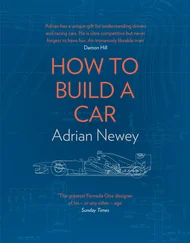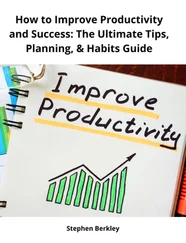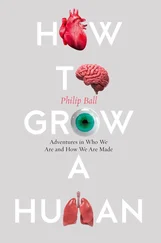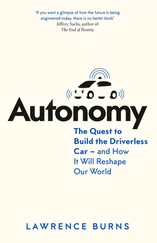Eyal, Nir - Hooked - How to Build Habit-Forming Products
Здесь есть возможность читать онлайн «Eyal, Nir - Hooked - How to Build Habit-Forming Products» весь текст электронной книги совершенно бесплатно (целиком полную версию без сокращений). В некоторых случаях можно слушать аудио, скачать через торрент в формате fb2 и присутствует краткое содержание. Год выпуска: 2014, Издательство: Nir Eyal, Жанр: Старинная литература, на английском языке. Описание произведения, (предисловие) а так же отзывы посетителей доступны на портале библиотеки ЛибКат.
- Название:Hooked: How to Build Habit-Forming Products
- Автор:
- Издательство:Nir Eyal
- Жанр:
- Год:2014
- ISBN:нет данных
- Рейтинг книги:5 / 5. Голосов: 1
-
Избранное:Добавить в избранное
- Отзывы:
-
Ваша оценка:
- 100
- 1
- 2
- 3
- 4
- 5
Hooked: How to Build Habit-Forming Products: краткое содержание, описание и аннотация
Предлагаем к чтению аннотацию, описание, краткое содержание или предисловие (зависит от того, что написал сам автор книги «Hooked: How to Build Habit-Forming Products»). Если вы не нашли необходимую информацию о книге — напишите в комментариях, мы постараемся отыскать её.
Hooked: How to Build Habit-Forming Products — читать онлайн бесплатно полную книгу (весь текст) целиком
Ниже представлен текст книги, разбитый по страницам. Система сохранения места последней прочитанной страницы, позволяет с удобством читать онлайн бесплатно книгу «Hooked: How to Build Habit-Forming Products», без необходимости каждый раз заново искать на чём Вы остановились. Поставьте закладку, и сможете в любой момент перейти на страницу, на которой закончили чтение.
Интервал:
Закладка:
These factors will differ by person and context, so designers should ask, "What is the thing that is missing that would allow my users to proceed to the next step?" Designing with an eye toward simplifying the overall user experience reduces friction, removes obstacles, and helps push the user across Fogg’s action line.
The action phase of the Hook Model incorporates Fogg’s six elements of simplicity by asking designers to consider how their technology can facilitate the simplest actions in anticipation of reward. The easier an action, the more likely the user is to do it and to continue the cycle through the next phase of the Hook Model.
Below are examples of simple online interfaces used by a number of successful companies to prompt users to move quickly into the Hook’s next phase.
Logging In with Facebook
Traditionally, registering for a new account with an app or website requires several steps. The user is prompted to enter an email address, create a password, and submit other information such as a name or phone number. This burden introduces significant friction, detracting users from signing-up. Mobile devices present the special challenge of smaller screens and slower typing speeds.
However, today it is nearly impossible to browse the web or use a mobile app without encountering a Facebook Login prompt (figure 8 ) . Many companies have eliminated several steps in the registration process by enabling users to register with their sites by using their existing Facebook credentials.
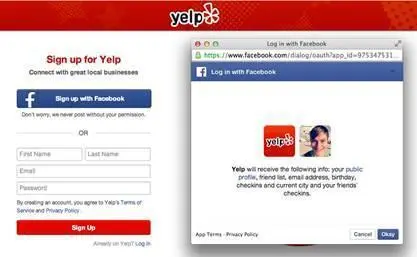
Figure 8
While the Facebook login function is useful for time-starved people, it should be noted that for others, the tool doesn’t necessarily ease registration. For example, users who are wary of how Facebook might share their personal information may not find the login button helpful because it may trigger new anxieties (and thus, brain cycles) about the social networking giant’s trustworthiness. Again, the roadblocks confronting users vary by person and context. There is no one-size-fits-all solution, so designers should seek to understand an array of possible user challenges.
Sharing with the Twitter Button
Twitter helps people share articles, videos, photos or any other content they find on the web. The company noticed that 25 percent of tweets contained a link and therefore sought to make the action of tweeting a website link as easy as possible. [lxii]
To ease the way for link-sharers, Twitter created an embeddable Tweet button for third-party sites, allowing them to offer visitors a one-click way to tweet directly from their pages (figure 9). The external trigger opens a preset message, reducing the cognitive effort of composing the tweet and saving several steps to sharing.

Figure 9
Searching with Google
Google, the world’s most popular search engine, was not the first to market. It competed against incumbents such as Yahoo!, Lycos, AltaVista, and Excite when it launched in the late 1990s. How did Google come to dominate the multi-billion dollar industry?
For one, Google’s PageRank algorithm proved to be a much more effective way to index the web. By ranking pages based on how frequently other sites linked to them, Google improved search relevancy. Compared with directory-based search tools such as Yahoo!, Google was a massive time-saver. But Google also beat out other search engines that had become polluted with irrelevant content and cluttered with advertising (figure 10). From its inception, Google’s clean and simple homepage and search results pages were solely focused on streamlining the act of searching and getting relevant results (figure 11).
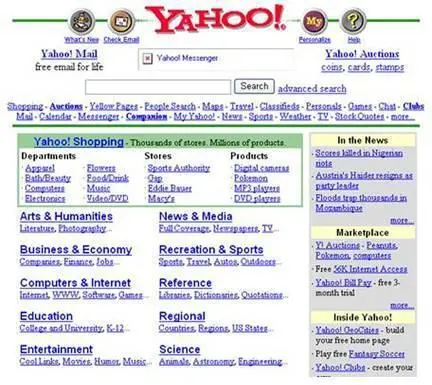
Figure 10 - The Yahoo homepage circa 1998
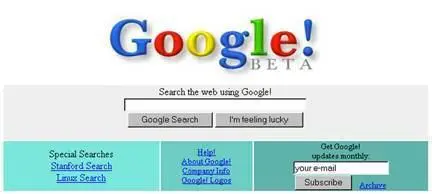
Figure 11 - The Google homepage circa 1998
Simply put, Google reduced the amount of time and the cognitive effort required to find what the user was looking for. The company continues to relentlessly improve its search engine by finding new ways to remove whatever might be in the user’s way — no matter how seemingly trivial. While its homepage remains remarkably pristine, Google now offers myriad tools to make searching easier and faster — including automatic spelling correction, predictive results based on partial queries, and search results that load even as the user is typing. Google’s efforts are intended to make searching easier to keep users coming back.
Taking Photos with the Apple iPhone
Many of life’s most treasured moments come and go in an instant. We try and capture these memories in photos, but if our camera is out of reach or too cumbersome to catch the shot, we lose those moments forever. Apple recognized it could help iPhone owners take more photos by making picture-taking easier. The company made the camera app directly launchable from the locked screen, without requiring a password. Compared to the number of steps needed to access photo apps on other smartphones, the simple flick gesture of the native iPhone camera gives it a virtual monopoly as users’ go-to solution whenever they need to snap a quick pic (figure 12).

Figure 12
Scrolling with Pinterest
How can a website make browsing easier? One solution popularized by digital pinboard site, Pinterest, is the infinite scroll. In the past, getting from one web page to the next required clicking and waiting. However on sites such as Pinterest, whenever the user nears the bottom of a page, more results automatically load. Users never have to pause as they continue scrolling through pins or posts without end (figure 13).
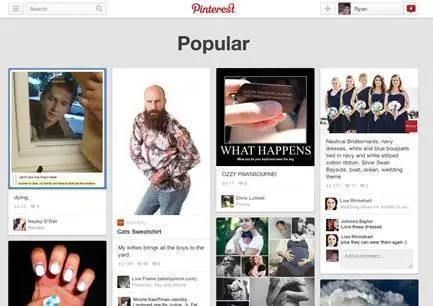
Figure 13
***
The examples above show how simplicity increases the intended user behaviors.
Motivation or Ability — Which Should You Increase First?
After uncovering the triggers that prompt user actions and deciding which actions you want to turn into habits, you can increase motivation and ability to spark the likelihood of your users taking a desired behavior. But which should you invest in first, motivation or ability? Where is your time and money better spent?
The answer is always to start with ability.
Of course, all three parts of B=MAT must be present for a singular user action to occur; without a clear trigger and sufficient motivation, there will be no behavior. But for companies building technology solutions, the greatest return on investment will generally come from increasing a product’s ease-of-use.
The fact is, increasing motivation is expensive and time-consuming. Website visitors tend to ignore instructional text. Their attention is split on several tasks at once and they have little patience for explanations about why or how they should do something. Instead, influencing behavior by reducing the effort required to perform an action is more effective than increasing someone’s desire to do it. Make your product so simple that users already know how to use it, and you’ve got a winner.
Читать дальшеИнтервал:
Закладка:
Похожие книги на «Hooked: How to Build Habit-Forming Products»
Представляем Вашему вниманию похожие книги на «Hooked: How to Build Habit-Forming Products» списком для выбора. Мы отобрали схожую по названию и смыслу литературу в надежде предоставить читателям больше вариантов отыскать новые, интересные, ещё непрочитанные произведения.
Обсуждение, отзывы о книге «Hooked: How to Build Habit-Forming Products» и просто собственные мнения читателей. Оставьте ваши комментарии, напишите, что Вы думаете о произведении, его смысле или главных героях. Укажите что конкретно понравилось, а что нет, и почему Вы так считаете.


